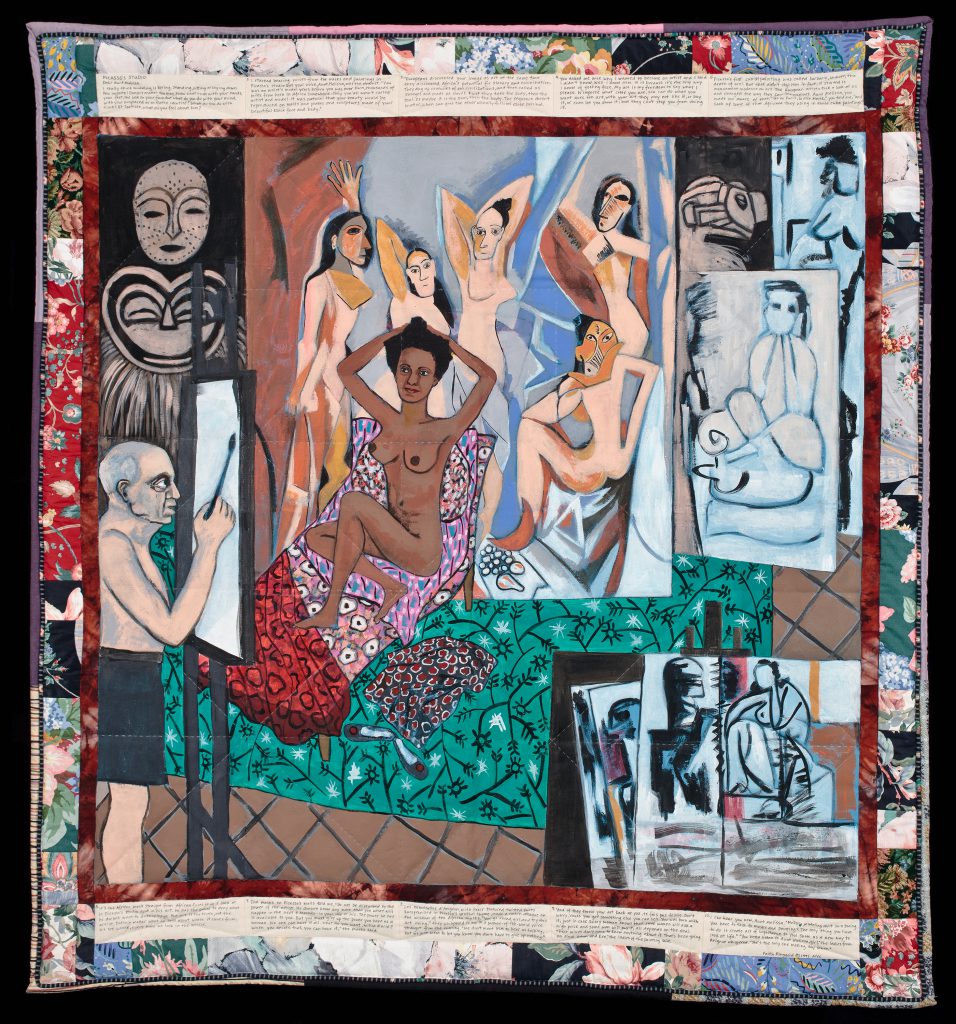Faith Ringgold’s Picasso’s Studio (1991) is a cornerstone of the Worcester Art Museum’s collection. Acquired directly from the artist via her gallery in 1998, the work is one of the most celebrated narrative quilts by the artist, author, and activist. Recently a part of major exhibitions on Ringgold at Musée Picasso Paris, New York’s New Museum, and more, Picasso’s Studio is back on view in Worcester for the first time in ten years.
The quilt is part of a series titled The French Collection which tells the fictional story of Willia Marie Simone, a young African American woman visiting Paris in the 1920s. Throughout the story, Willia meets numerous influential figures in European culture. In stark contrast to the realities of the time, Willia ultimately finds herself accepted and respected as a peer.

Through Picasso’s Studio, Ringgold boldly challenges the accepted narrative of art history—a narrative that has historically excluded and ignored the achievements of Black women and “non-western” artists. In the quilt, Ringgold depicts Willia modeling for Pablo Picasso (1881–1973), in front of Les Demoiselles d’Avignon (1907), his iconic early Cubist painting of a group of white female sex workers. Picasso, who is credited for co-founding the Cubist Movement, was heavily influenced by the aesthetics created by African artists, particularly as seen in African masks. Ringgold takes this on directly. Across the quilt, in an imagined letter from Willia to her aunt at home in America, Ringgold writes,
“Europeans discovered your image as art at the time they discovered Africa’s potential for slavery and colonization. They dug up centuries of our civilizations, and then called us savages and made us slaves.
“It’s the African mask straight from African faces that I look at in Picasso’s studio and in his art. He has the power to deny what he doesn’t want to acknowledge. But art is the truth, not the artist. Doesn’t matter what he says about where it comes from. We see where, every time we look in the mirror.”
By placing Willia in conversation with Picasso’s painting, Ringgold calls out the sources the artist mined for inspiration—women and the art of Africa—and re-inserts Black women into the history of art.
The story of Picasso’s Studio and The French Collection is semi-autobiographical for Ringgold, depicting a Black woman finding acceptance and praise for her art in the face of racism and sexism. It is also a form of wish fulfillment, depicting a life that few African American woman artists could have dreamed of having at the time.
“You asked me once why I wanted to become an artist and I said I didn’t know. Well I know now. It is because it’s the only way I know of feeling free. My art is my freedom to say what I please. [It’s not important] what color you are, you can do what you want [with your] art. They may not like it, or buy it, or even let you know it; but they can’t stop you from doing it.”
This sentiment and its powerful themes of racial justice, feminism, and family are woven throughout Ringgold’s decades-long career.
This article was featured in the fall 2023 edition of the Worcester Art Museum’s access Member magazine.
Faith Ringgold: Freedom to Say What I Please, October 7, 2023–March 17, 2024


